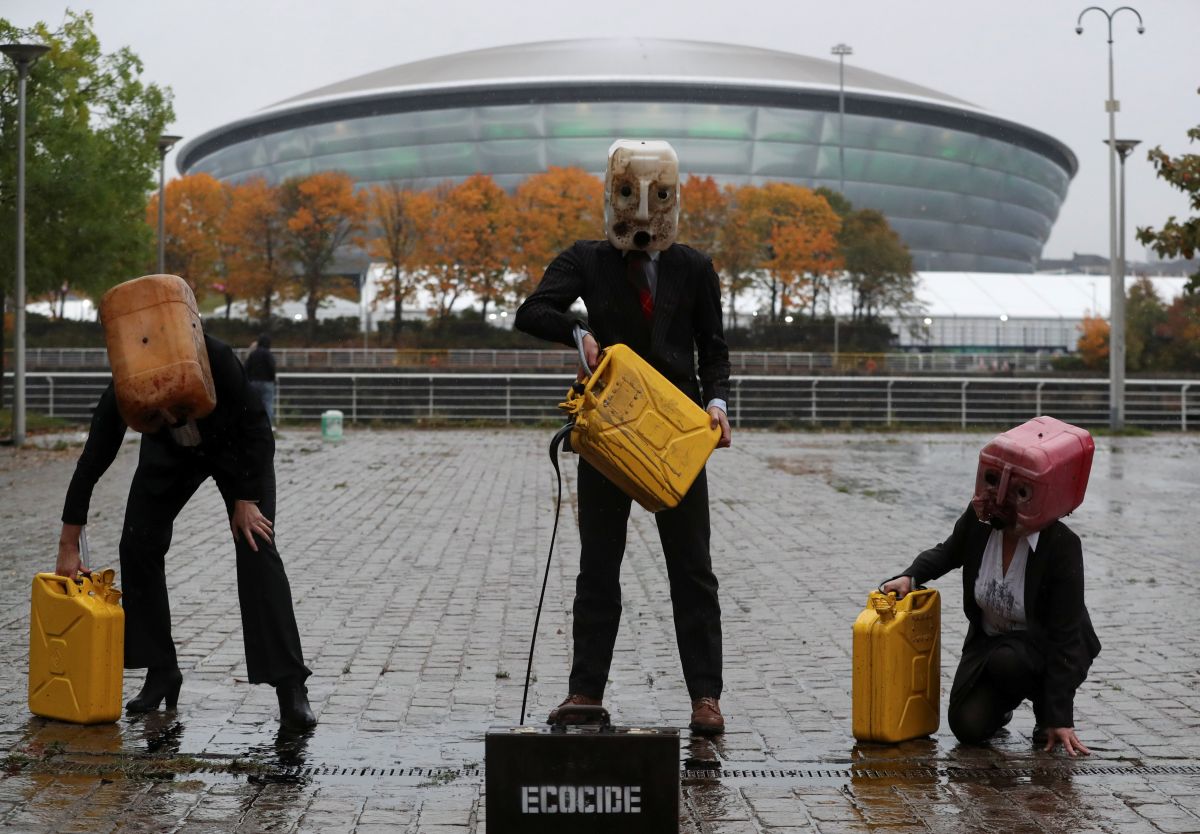COP26 - Great ambitions, Great challenges
COP26, the 26th Conference of the Parties to the United Nations Framework Convention on Climate Change (UNFCCC), is being held in Glasgow until 12 November. The aim is to increase global ambitions in the area of climate change mitigation, adaptation to these changes, as well as financing the fight against climate change. World leaders and climate scientists consider this event to be the most important climate summit since COP21 in Paris in 2015. Expectations are extremely high, but the preparations for COP26 and course of the negotiations signal numerous challenges to be overcome by the negotiators.
 Photo: RUSSELL CHEYNE/Reuters/Forum
Photo: RUSSELL CHEYNE/Reuters/Forum
Why is COP26 different from the previous conferences?
During COP21 in Paris in 2015, a universal and legally binding agreement with regard to climate, the Paris Agreement, was signed. Almost 190 countries (and the EU) adopted a long-term goal of holding the increase in the global average temperature to well below 2°C (preferably 1.5°C) above pre-industrial levels. To track their progress towards this target, countries committed to submit a monitoring report, called individual nationally determined contributions (NDC), every five years. COP26 is the first climate summit since the Paris Agreement where, apart from technical decisions (as in the case of the COP24 summit in Katowice and adoption of the “Katowice Rulebook”), key political decisions are to be made. On the eve of COP26, though, reports about the updated NDCs show the effort so far has been insufficient to meet the Paris Agreement assumptions, and a further increase in ambition, mainly the adoption of a binding 1.5°C target, is necessary to avoid a climate catastrophe.
What is a “climate catastrophe”?
The problem to be faced at COP26 is a vision of a “climate catastrophe” that threatens the entire planet if the ambitions of the countries to reduce greenhouse gas (GHG) emissions are not increased. This phrase “climate catastrophe”, repeated by world leaders, including the UN Secretary-General Antonio Guterres, was included in the latest report by the UN Intergovernmental Panel on Climate Change (IPCC). It presented the consequences of global warming by 1.5°C and explained that any additional temperature rise will have a significant impact on the atmosphere, lands, and oceans, leading to a higher intensity and greater frequency of extreme rainfall, severe drought and heat waves, and more. These effects will translate into serious consequences for humanity, including extreme poverty, hunger, mass forced migration, and conflict. Many of the changes resulting from global warming, for example, melting ice sheets, rising sea levels, loss of biodiversity, will be irreversible.
What will happen during COP26?
The COVID-19 pandemic delayed COP26 from 2020, which allowed more time for better preparation of the negotiations at the conference and extensive intergovernmental consultations. This opportunity was, however, only used to a moderate extent. Many countries still have not officially presented their new NDCs, which establish the starting point for the negotiations. Only 49 countries (including the U.S. and EU countries) have committed to achieving the goal of zero net CO2 emissions by 2050. Among the largest emitters, China and Russia are less ambitious and plan to reduce their emissions only by 2060. The means to achieve climate neutrality will be the main goal of the detailed negotiations, including the fulfilment of the promise of developed countries to raise $100 billion by 2020 to fight climate change, reduction in the use of fossil fuels, establishment of emissions pricing mechanisms, reduction of transport-related emissions, and decarbonisation of heavy industry. The discussion on “climate justice” (treating developing economies fairly) will be an important point of the negotiations.
What will be the measure of COP26’s success?
The results of the climate negotiations during the meetings are not expected to be as spectacular as in the case of COP21 in Paris. The challenge is how to effectively implement the assumptions of the Paris Agreement, which require developing appropriate and common binding mechanisms. It will be particularly important to obtain ambitious declarations from countries most dependent on fossil fuel exports (e.g., Saudi Arabia) and imports (e.g., China), especially in the context of the problems with the post-pandemic recovery. Such declarations could be won thanks to joint pressure from the EU and the U.S. (which, after returning to the Paris Agreement, seeks to demonstrate climate leadership again). However, for COP26 to be considered a real success, the countries should commit to the 1.5°C target as the upper limit on global warming.


